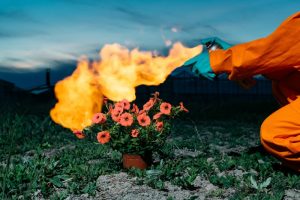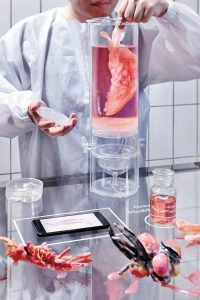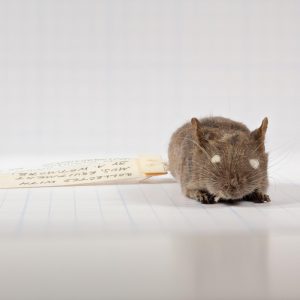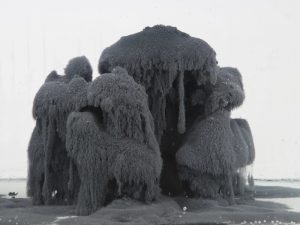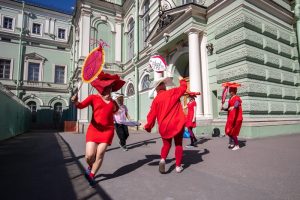Tissue Culture Lab at the VivoArts School for Transgenic Aesthetics (part 1)
As promised yesterday here’s a report on the Tissue Culture lab that took place on September 15 at the VivoArts School for Transgenic Aesthetics Ltd., the temporary research and education institute set up by Adam Zaretsky and Waag Society in Amsterdam.
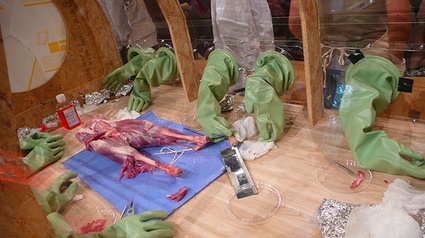
The Tissue Culture Lab was headed by Oron Catts of the SymbioticA and Tissue Culture & Art Project fame. In this hands-on wet lab for public practical and experiential tissue culture technique, we isolated primary tissues (mostly bone marrow, muscle and HeLa cells) in a custom-made sterile hood and then incubated them separately from their original corporeal context. but more interestingly we got to face and discuss some of the ethical issues that accompany tissue culture and the process of working with life in general.
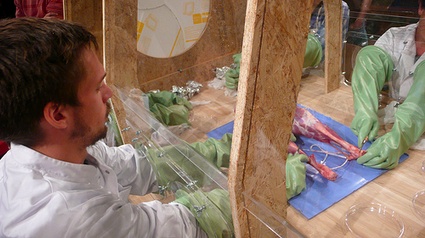
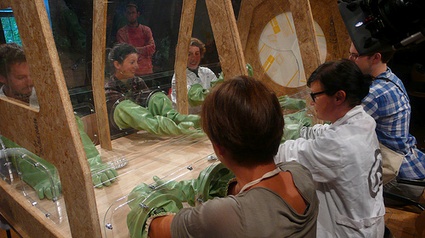
Ours was a very basic and rough approach to tissue culture. We performed some very mundane tasks: we learnt the art of “pipetting”, we mixed antibiotics, trypsin and other ingredients to create a solution that would provide cells with a body similar to the one they come from. We got to don huge green gloves and manipulate knives and tweezers.
The aim of the wet lab was not to have us run our own lab. The objective of the workshop was to present the general public with the technology and the dilemmas that accompanies it. A hands-on approach takes the technology beyond a strictly scientific approach and informs the debate on the ethical, cultural and social implication of tissue culture. What does it mean to work with living, semi-living or formely living beings? What does it mean to grow disembodied cells from a former organism? What’s the meaning of tissue culture for artistic purposes versus health application? Or the development of a new weapon?
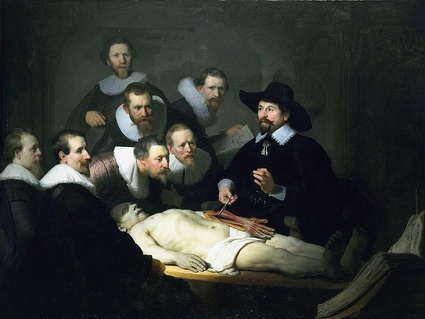 Rembrandt van Rijn, The Anatomy Lesson of Dr. Nicolaes Tulp, 1632
Rembrandt van Rijn, The Anatomy Lesson of Dr. Nicolaes Tulp, 1632
Amusingly, the whole operation took place under a reproduction of Rembrandt’s Anatomy Lesson which graces the walls of Waag’s Theatrum Anatomicum room.
First we worked with a recently slaughtered goat then with the HeLa cells that Adam went to fetch in Leyden and brought back in a box filled with ice. As mentioned in my previous post, Henrietta Lacks’ doctor removed cells from her cervix and provided Johns Hopkins University with a sample of these cancer cells. It happened in 1951 and the patient was never asked if she’d agree to that. The HeLa cell cultures survived and multiplied so well in culture, that they were soon being shipped to research labs around the world. In 1975, the family of Henrietta Lacks learned that her cells still lived, spread all over the world.
The cells are controversial. Some people gained recognition for the papers they wrote and the research they made using the cells of this young black woman, other made money with her cells, they became mere commodities but her family was never consulted and they didn’t received a cent.
Because we were working with the cells taken from a woman who died of cervical cancer, some participants to the lab asked whether they were safe to use. Apparently they are ok. These cells have been used throughout the world for decades without anyone being infected by them.
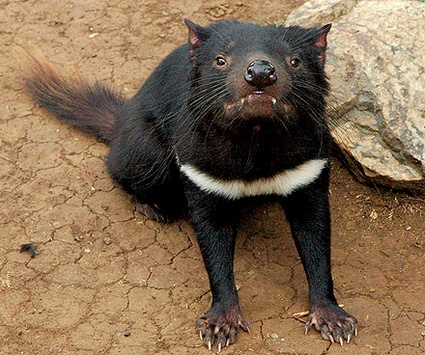 A Tasmanian Devil
A Tasmanian Devil
The only known case of a continual line of cancer cells that had outlived its original host by year is the one affecting the Devil of Tasmania. The malignant cells are transmitted from one animal to another through bites, while feeding or mating. The disease apparently began with a single sick devil, probably in the mid-1990s, that directly spread the cancer cells by biting rivals in the face and around the mouth, which is natural devil behavior. Bits of tumor break off one devil and stick in the wounds of another.
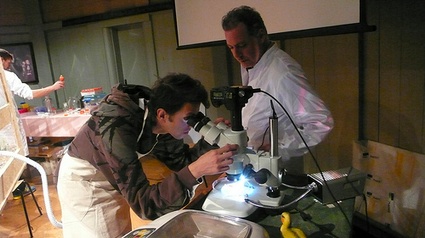
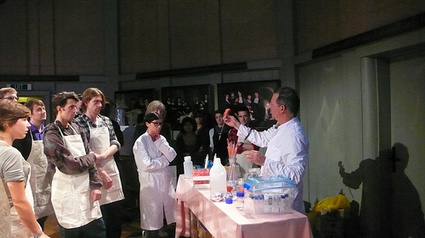
During the workshop we also learned that very few cells seem to be able to grow very well without the blood plasma of a calf. The Tissue Culture and Art Project’s famous Victimless Leather jacket was fed with that blood. The irony is thus that the project was not victimless at all. The same goes for the barely edible frog steaks that required the serum from two calves in order to grow.
Technology is getting better at hiding cruelty. Catts gave the example of a trip that he and Ionat Zurr made to Spain where they observed that opposition to bullfighting had intensified, but Spanish people are eating more and more at McDonald’s.
Taxonomical crisis. What we see now in labs is life but not life we were used to. Linné‘s system is still used but it had to be modified.
If life isn’t the same anymore, neither is the notion of death. TC&AP performs killing rituals after they’ve exhibited a piece in a show. They would grow a living or rather ‘semi-living’ piece using parts of a dead animals, then they grow it, giving the public the feeling that the new entity is living. As a result, some people complain about the ‘slaughter’ of an entity that used to belong to a dead body. Wonder if anyone is still following me here?
There are various ways to incubate the cells. You can either use an incubator:
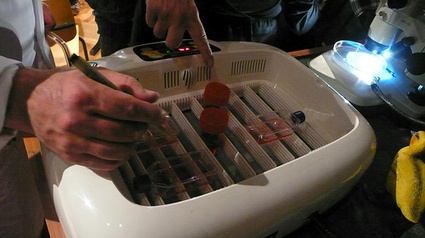
Or your own body. No one was up for the fleshy option. Except Adam who got Oron Catts to tape the flask containing the cells on his thorax:
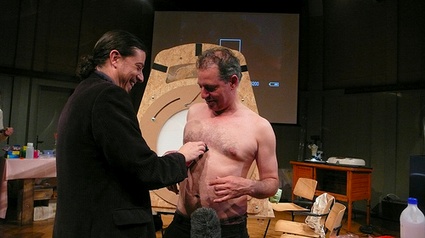
One might believe at first sight that making things out of living stuff would be more environmentally-friendly but it’s not. Mostly because of the colossal amount of waste required by scientific practice. Take glass pipettes for example: they have to be washed several times, sterilized and individually packaged in plastic before they can be used again. Plastic used to replace glass is always wasteful because it has to be wrapped in plastic too and can only be used once before it is binned. Each day bags and bags of laboratory waste have to be incinerated.
At the end of the workshop, Adam generously invited us to join a barbecue were we would eat the remains of the goat we had scavenged in search for living cells. I wonder if anyone had the appetite for it.
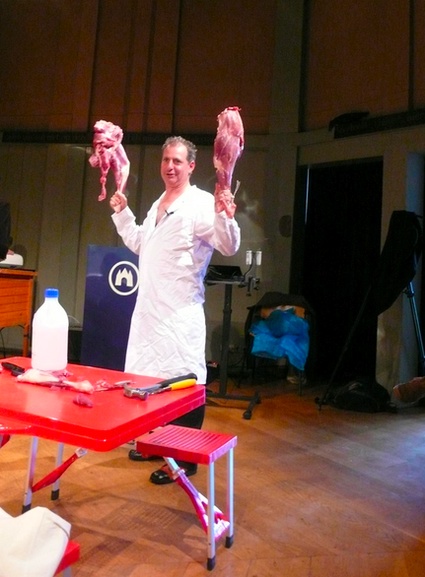
Next sessions of VASTAL labs and talks: November. We’ll keep you posted on that one too!
Previously: Image of the day, September programme of the VivoArts School for Transgenic Aesthetics and Day 1 at the VivoArts School for Transgenic Aesthetics: Seed broadcasting workshop.
And if you read dutch, Waag has a blog post about Huub de Groot and Rich Pell’s presentations at VASTAL.

